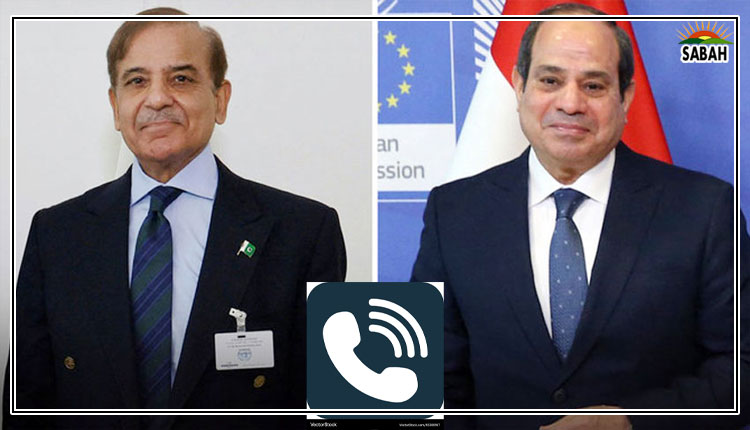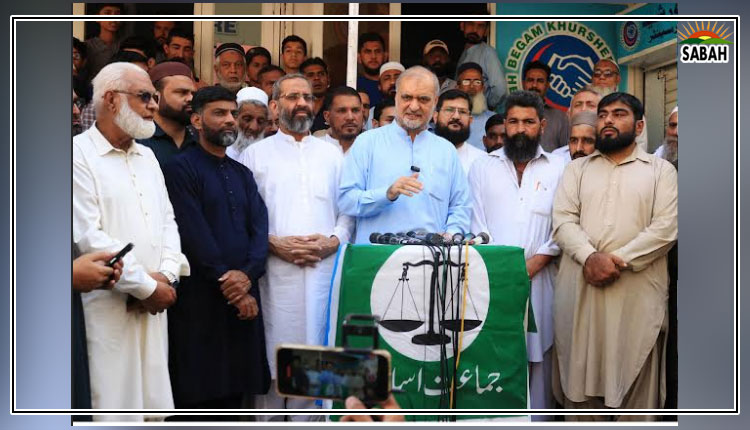Is nuclear the answer to our energy SOS?…Dr Khaqan Hassan Najeeb
Energy security serves as the cornerstone of socio-economic development for any nation. Unfortunately, Pakistan has been ensnared in a web of energy challenges for decades, struggling to find a sustainable path forward. The energy sector, dominated by inefficient state-run enterprises, has become a labyrinth of mismanagement, where the state’s overwhelming influence in generation, transmission, and distribution has stifled innovation and market dynamics.
The country has struggled to establish a competitive energy market, resulting in suboptimal decisions that have exacerbated the crisis. Weak planning and short-term expediencies have led to policy frameworks that impose an unbearable burden of escalating energy costs on the populace, disproportionately impacting the vulnerable and hindering economic growth. As the nation grapples with these systemic issues, the urgent need for a transformative approach to energy policy is evident one that prioritizes efficiency, sustainability, and equitable access for all citizens.
Pakistan must embark on a bold quest to redefine the institutional framework of its energy sector. A robust regulatory backbone is needed, anchored by a unified and authoritative energy regulator, and a dynamic, professional energy ministry. It is time to employ the concessions model or divest state monopolies to usher in an era of competition within the electricity transmission and distribution networks, promoting innovation and efficiency.
The country needs to redesign its electricity tariff structure to incorporate seasonal pricing to address the demand drop of over 10,000MW during winter, and ultimately transition away from a uniform tariff system.
Optimizing gas allocation and transitioning imported coal plants to local resources are crucial moves for alleviating the energy crisis. However, it is important to acknowledge that there is no silver bullet for these complex challenges. The journey ahead will be long and fraught with obstacles as we navigate the intricate maze of deregulation, commercial viability, and sound policymaking. Implementing these changes will require tenacity, collaboration, and a shared vision for a sustainable energy future.
In a critical moment for the energy sector, where reorganization towards sustainability is imperative, crafting a balanced energy mix becomes not just essential but transformative. Pakistan has a generation capacity of 45,885MW, including ‘take or pay’ and must-run power plants. In this configuration oil and gas dominate the landscape at 46.85 per cent (21,499MW), followed by hydro at 23.18 per cent (10,635MW) and imported coal at 10.18 per cent (4,672MW).
Nuclear Power Plants (NPPs) which offer an economical, reliable, and environmentally safe solution for base-load electricity generation have a modest share of 7.9 per cent (3,620MW). Despite their relatively small footprint in the energy mix, NPPs have demonstrated their usefulness by generating over 17.43 per cent of the nations electricity during 2022-23.
In a country where the average nuclear energy costs Rs14.86 compared to the hefty Rs47.05 for oil and Rs40.22 for RLNG sticking to these pricey options highlights a puzzling trend in energy policy. Surely, this misalignment burdens consumers with inflated costs and amplifies the ongoing energy crisis. It is important to mention that Pakistan has assured lifetime fuel supply contracts for each NPP.
A mix of factors has conspired to keep nuclear power simmering on the back burner of Pakistan’s energy strategy, casting a shadow over its real potential. The story of nuclear energy is often muddled with myths of sky-high costs and misunderstood tariffs, serving as handy excuses to stick with pricier, less sustainable energy sources and keep the energy crisis alive.
The long gestation period of nuclear plants is a stumbling block for regimes chasing quick political wins instead of long-term solutions. Without the lure of immediate political payoffs, governments shy away from nuclear energy, even though it promises stable, affordable and clean electricity. As a result, this energy source remains largely untapped, leaving Pakistan exposed to volatile fuel prices and an unsustainable energy mix. It’s time to dispel these myths and recognize that embracing nuclear power can unlock energy security and economic resilience for the nation.
In the 1970s, skyrocketing fossil fuel prices nudged many countries toward nuclear power. Today, according to the International Atomic Energy Agency (IAEA), nuclear energy meets nearly 10 per cent of global energy demand, with many new plants sprouting up worldwide. This shift is fueled by the compelling benefits of nuclear energy, making it an attractive choice in the quest for sustainable power.
Firstly, NPPs operate at an impressive capacity factor of around 80 per cent, far surpassing the sub-50 per cent performance of most other energy sources. This efficiency translates into reliable and consistent electricity generation. Additionally, NPPs have an operational lifespan of 60 years, extendable to 80, compared to the 25-30 years typical for other technologies. This combo of longevity and high-capacity factor makes nuclear energy economically viable despite its initial higher capital costs.
Once fueled, a nuclear plant can hum along for 14 to 18 months, making it remarkably resilient to supply chain disruptions and infrastructure challenges. Nuclear power emits negligible greenhouse gases as a clean energy source, often producing lower CO2 equivalent emissions than some renewable sources. Moreover, NPPs require significantly less land compared to wind and solar farms, making them a more space-efficient option for energy generation.
Pakistans heavy reliance on imported fossil fuels drains its foreign exchange reserves. In contrast, with its low fuel costs, nuclear energy offers a stable and predictable economic environment, making it a key player in a secure and sustainable energy future. Embracing nuclear power is a strategic move for countries aiming for energy independence and environmental stewardship in an unpredictable world.
Nuclear energy is gaining traction as the world zeroes in on climate change. Annual CO2 emissions by 1,000MW coal, oil, and gas plants roughly amount to 6.0 million tons, 5.0 million tons, and 3.0 million tons, respectively. In contrast, NPPs emit no harmful pollutants or greenhouse gases. The pledge at COP28 to triple nuclear energy by 2050 and the emphasis on nuclear power at the First Nuclear Energy Summit in Brussels highlight a shift towards nuclear as the cleanest energy source with zero CO2 emissions.
Nuclear energy is useful for Pakistan to claim the global communitys support as a country worst affected by climate change. By generating electricity from nuclear power, a country remains in step with global trends and can reap benefits from carbon credit trade and green financing policies.
Pakistan has committed to achieving the Sustainable Development Agenda of the United Nations by 2030. With fewer than seven years remaining, our achieving Sustainable Development Goal 7 Clean and Affordable Energy faces significant challenges due to low scores across all indicators: the share of renewable energy in total energy consumption, access to electricity and clean cooking fuels, and CO2 emissions. The long-term objective for the share of renewable energy indicator is a value of 55, whereas Pakistan stands at 8 (2020).
Nuclear energy is often sidelined by short-term agendas and political interests chasing quick wins instead of long-term benefits. It would be helpful for policymakers to acknowledge the role nuclear power can play in shaping Pakistan’s energy future.
Pakistan has acquired a wealth of experience and skills in building and operating NPPs, resulting in a safe and dependable nuclear power sector that meets international standards. By weaving nuclear energy into the national energy mix, the country can stride towards energy independence while fostering a cleaner, more sustainable environment.
Courtesy The News












